Tuesday 30th June
English L.O.: To explain author's intentions and character portrayal using text-based evidence.Activity 1: Listen to Chapter 8 AND Chapter 9 of 'Skellig' on the Learning --> Stories page of the website Activity 2: Write down 5 adjectives to describe Michael in the story so far and 5 adjectives to describe Mina. Today, we are going to explore P.E.E. paragraphs in a little more depth than last week. Take a look at the example of a P.E.E. paragraph below using evidence from the chapters we have just read.
P is for PointThis is where you make a statement about the text. I think that Michael's impression of Mina is that she is clever. E is for Evidence (or quote)This is where you use the text to back up your statement by quoting from the passage you’ve been given or from the text. Example: "...the kind of eyes you think can see right through you" E is for ExplanationThis is where you let loose creatively (not so loose that you forget what you want to say) and explain how the evidence backs up your point. Here you can explain the meaning of the quote and discuss the your inferences/ ideas. Example: This quote could suggest that Mina can tell when someone is lying or what they are thinking. The author might have described Mina's eyes like this because Michael is a closed off character and Mina would be able to help him show his emotions as she could guess what he is feeling. Activity 2: Write a PEE paragraph using the following 'point'. You will need to write the evidence and explanation. Mina thinks Michael is dangerous to the birds. Activity 3: Write a PEE paragraph using the following 'evidence'. You will need to make the point and write the explanation. "His black suit hung like a sack on his thin bones" You can read these chapters yourself by clicking the following links: Nonsense PoetryOpen the following link, read the information on the webpage, watch the learning video and complete activities 1, 2 and 3 at the bottom of the page: Nonsense Poetry |
MathsYear 5 L.O: To add decimals with the name number of decimal places.Activity 1: Re-watch the demonstration video below for today's lesson.
Activity 2: Open up the file below titled 'Y5 Reasoning & Problem Solving' and complete either the Bronze, Silver OR Gold page. Use the answers on page 5 to mark your work when you have finished.
Activity 3: For a challenge, open up the file below titled 'Y5 Platinum Challenge' and complete either the Bronze, Silver OR Gold page. Use the answers on page 4 to mark your work when you have finished.
Year 6 L.O: To convert metric measurements.Activity 1: Re-watch the demonstration video below for today's lesson.
Activity 2: Open up the file below titled 'Y6 Reasoning & Problem Solving' and complete either the Bronze, Silver OR Gold page. Use the answers on page 5 to mark your work when you have finished.
Activity 3: For a challenge, open up the file below titled 'Y6 Platinum Challenge' and complete either the Bronze, Silver OR Gold page. Use the answers on page 4 to mark your work when you have finished.
|
History L.O.: To explain at least two of the changes to football in Britain in the early 20th century.
Activity 1: Copy out the following table into your home learning books:
Activity 2: Watch the following video until 3 mins 56 seconds. Whilst you are watching, make notes on the differences in football in 1945 vs now on the table in your books.
Activity 3: Read the following information:
You will need: Internet access/books You will need to record:
Activity 4: Open up the activity below titled 'Kit Comparison' and identify the similarities and differences in the kit of an older and more modern player. |
P.E.In 2010, the FIFA World Cup was hosted in South Africa and Shakira's song 'Waka Waka' was chosen as the official song for this tournament. Watch the video below, follow along with dance moves to this song of footballing history.
|

 Activity 3: Read through the following example:
Activity 3: Read through the following example: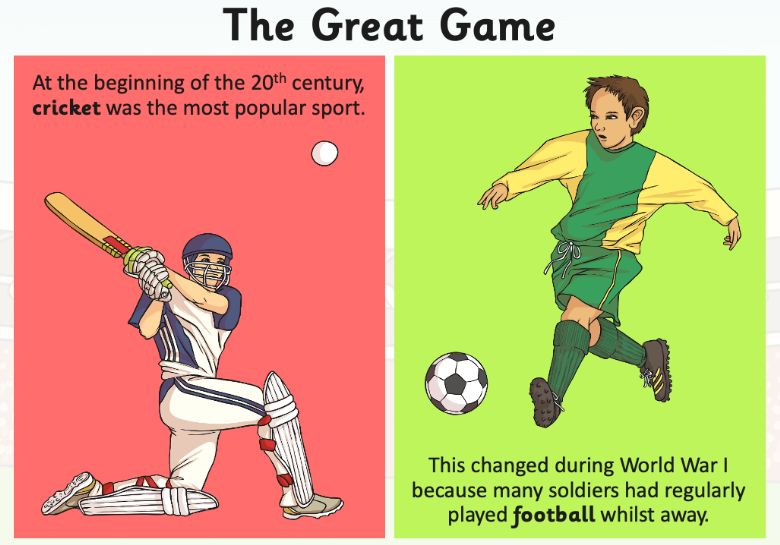
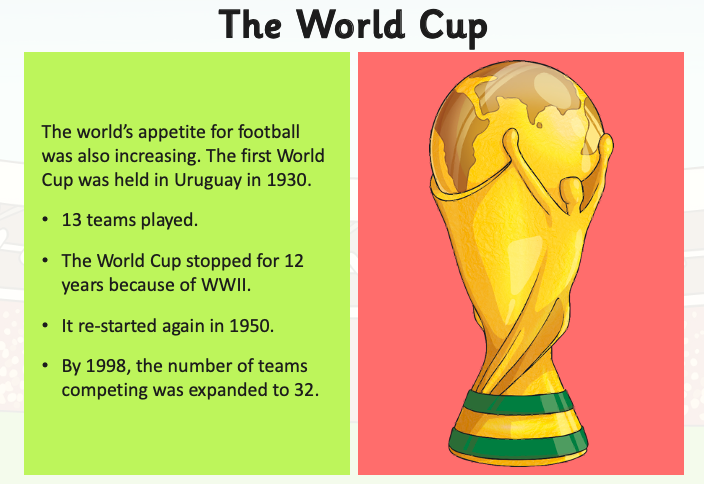
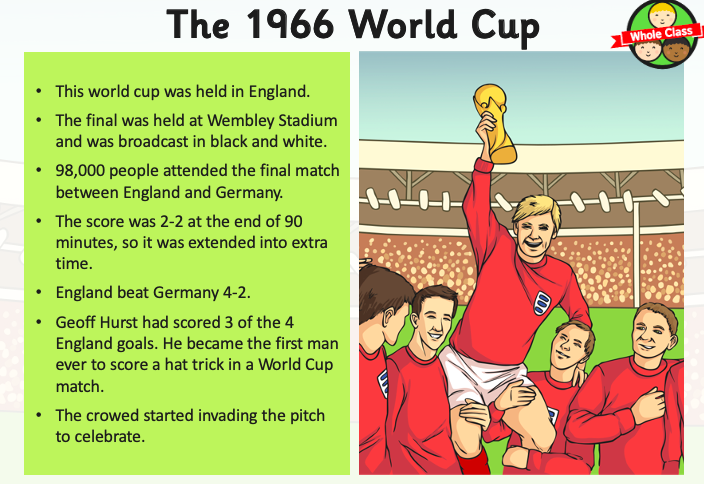
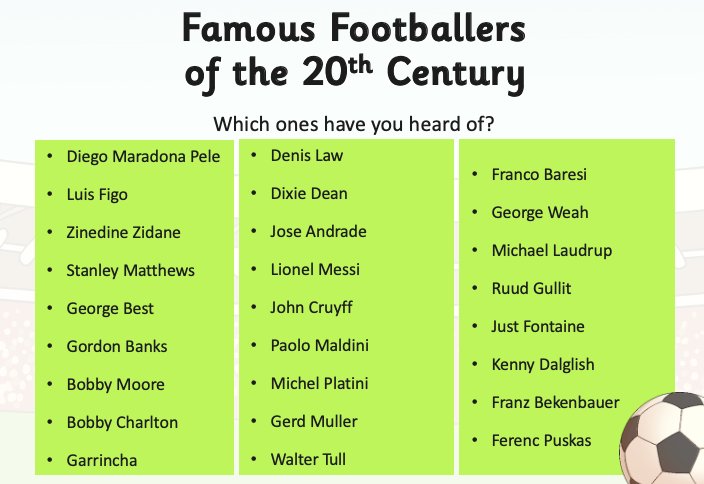
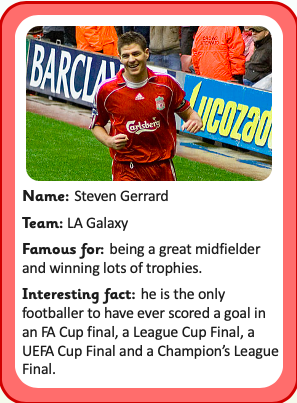 Activity 3: Open the file below titled 'Top Cards Activity' and create 2 top cards for your favourite 20th century football players. If you do not have a favourite, choose two players you are familiar with.
Activity 3: Open the file below titled 'Top Cards Activity' and create 2 top cards for your favourite 20th century football players. If you do not have a favourite, choose two players you are familiar with.